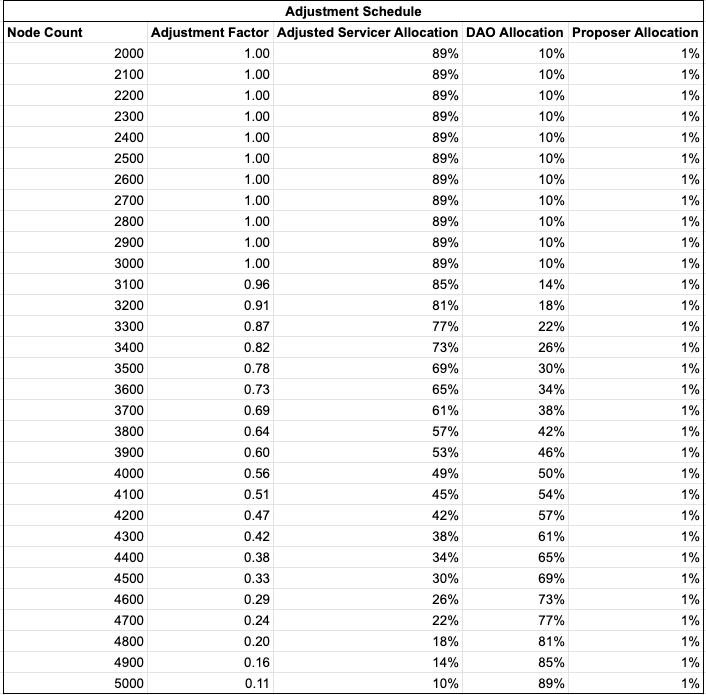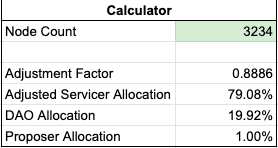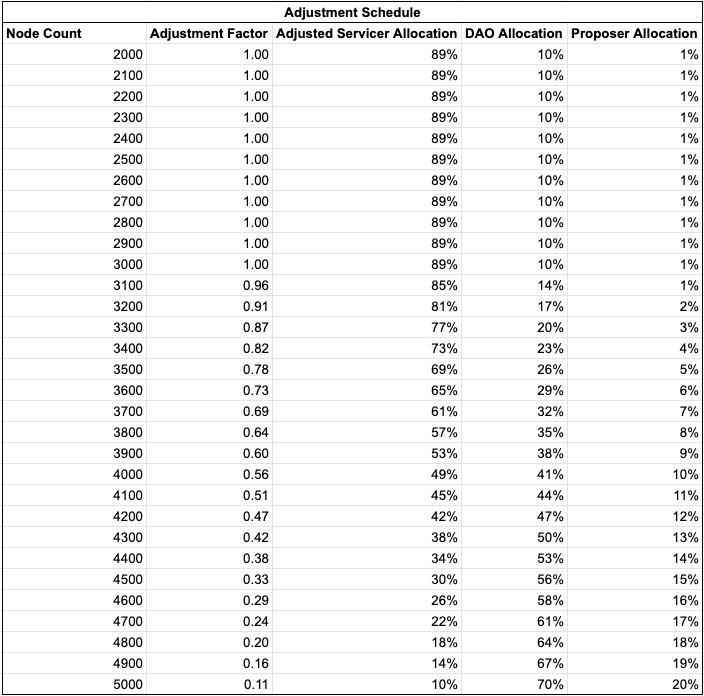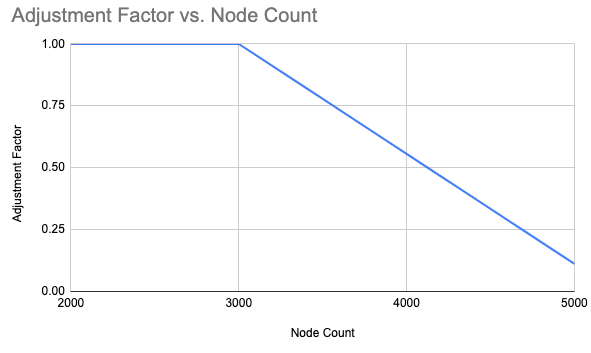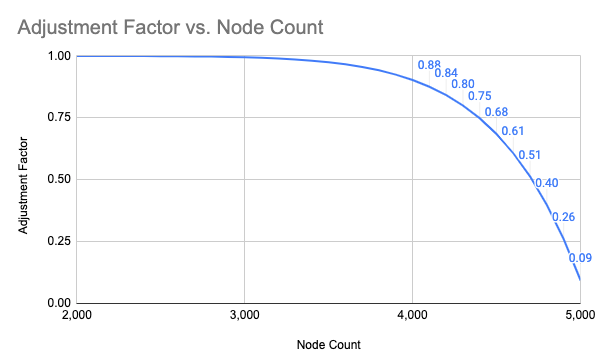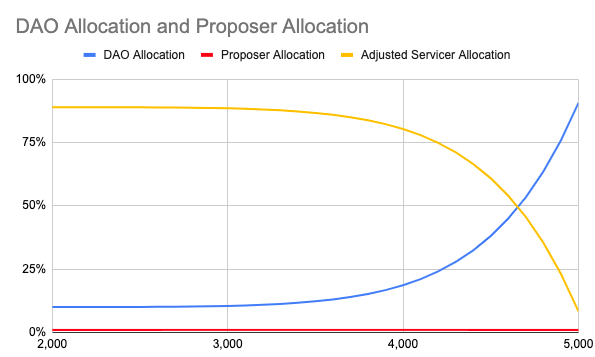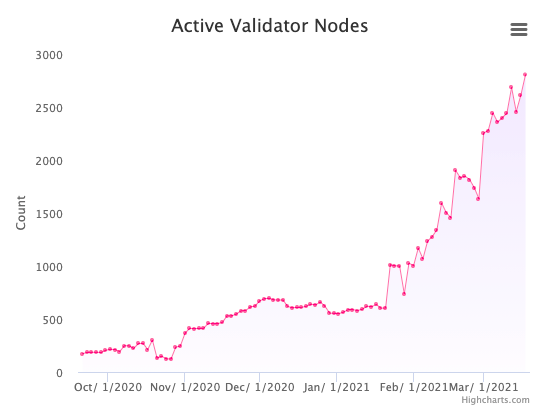@BenVan Your points are well taken. I believe there’s a balancing act we need to strike in the short term until a long-term fix is in place. We may need to make a sacrifice non-ideal economic incentives in the near term in order to secure the long-term existence of Pocket Network. My opinion is that once the long-term fix is completed, we can roll back any changes that the DAO isn’t in favor of.
Can you explain why you believe this is superior to decreasing the RelaysToTokensMultiplier? This has the effect of keeping the inflation at the same rate, assuming relays stay at the same level or increase meaning that node runners/apps would be diluted for the benefit of the DAO (which may be a good thing). By decreasing the RelaysToTokensMultiplier we stem the increase in the total supply of POKT, minimizing dilution which also minimizes the amount of nodes Whales need to run in order to match inflation.
I think it boils down to this notion  which I am still trying to understand. Presuming that relays/node remain similar or increase (due to network relay growth or nodes falling off), rewarding less per node via the RelaysToTokensMultiplier change appears to have the desired effect of reducing node profitability. My point is that the net effect remains the same with the important exception dilution is decreased.
which I am still trying to understand. Presuming that relays/node remain similar or increase (due to network relay growth or nodes falling off), rewarding less per node via the RelaysToTokensMultiplier change appears to have the desired effect of reducing node profitability. My point is that the net effect remains the same with the important exception dilution is decreased.
To Benvan’s point, node runners are taking a very long-term view when thinking about the payback period so they are not only evaluating month-to-month profitability, but a drastic change to this number should lengthen that payback period putting pressure on both whales and small node runners alike.
Re: the median comments - this isn’t a near-term fix, but I think it’s more adaptable than it initially appears. Averages are subject to extremes, whereas medians have the effect of ignoring extremes. There’s already games with the average that aren’t being considered. If someone where to accumulate a massive amount of POKT, say 30M POKT and stake it in a single node, they’d drastically increase the average stake massively decreasing the probability that even other whales can be the block producer. Based on my numbers, adding one node at this stake amount would ~1.5x the average stake or decrease everyone else’s odds of producing the block by ~33%. I’ll admit this is an extreme scenario, but it’s illustrative of the point.
In the scenario you mention, trying to game the system by creating many small node stakes, the change in the median may decrease from 15,009 (according to my math of mid-Feb numbers) to 15,001, which is a comparatively minute change when considering the change that might happen with an average. The amount of effort it would take to make this work would be prohibitive.
That said, I could get behind @Garandor’s proposal of scaling up the proportion of the DAO allocation as nodes near 5,000 as it seems to have the least amount of downside.
 which I am still trying to understand. Presuming that relays/node remain similar or increase (due to network relay growth or nodes falling off), rewarding less per node via the RelaysToTokensMultiplier change appears to have the desired effect of reducing node profitability. My point is that the net effect remains the same with the important exception dilution is decreased.
which I am still trying to understand. Presuming that relays/node remain similar or increase (due to network relay growth or nodes falling off), rewarding less per node via the RelaysToTokensMultiplier change appears to have the desired effect of reducing node profitability. My point is that the net effect remains the same with the important exception dilution is decreased.